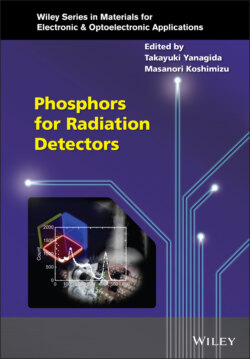Читать книгу Phosphors for Radiation Detectors - Группа авторов - Страница 21
1.3.6 Temperature Dependence
ОглавлениеAs with other phosphors, scintillators show temperature dependence, especially on light yield and timing properties. When we consider the temperature dependence, population of excited states for luminescence and trap states and thermal quenching should be considered. The populations of excited states depend on the thermal vibration of the lattice, so if we increase the temperature, the light yield shows the highest value at the optimum temperature while the decay time decreases monotonically. The same is also true for trap states which deeply relate to TSL described in Section 1.4 and Chapter 7. If the environmental temperature for the sample is enough to excite trapped electrons to the bottom of the conduction band, trapped electrons can be released immediately after trapping, and contribute to scintillation. In this case, the scintillation light yield appears to have an optimum temperature. This phenomenon is called thermal activation. Thermal quenching is common for all the phosphors, and generally, higher light yield can be achieved at lower temperatures due to the suppression of thermal loss. In common thermal quenching, light yield and decay time decrease with the increase in temperature.
In most practical detectors, the operating guaranteed temperature is from −30 to 40 °C, but detectors in some special applications, such as oil‐logging and monitoring the area around nuclear reactors, must work at several hundreds of °C. The temperature dependence of scintillators and photodetectors cannot be avoided, and we generally correct it with an analysis method or control the temperature by hard (cooling instrument). If we wish to measure the temperature dependence of the scintillator as in solid‐state physics, it would be better to measure it by an X‐ray induced radioluminescence spectrum because only the sample is cooled in this experiment. On the other hand, if we wish to measure the temperature dependence as a radiation detector, the device module (scintillator + photodetector) should be measured ([77]).
The temperature dependence relates to emission mechanisms, described in Section 1.3. Previously, AFL was considered to have no temperature dependence, since it was due to an electron transition between core and valance band, and it was experimentally confirmed from room temperature to ~90 °C [78]. However, recent research reveals that even AFL shows temperature dependence when it is investigated at higher temperatures than 100 °C [26].
